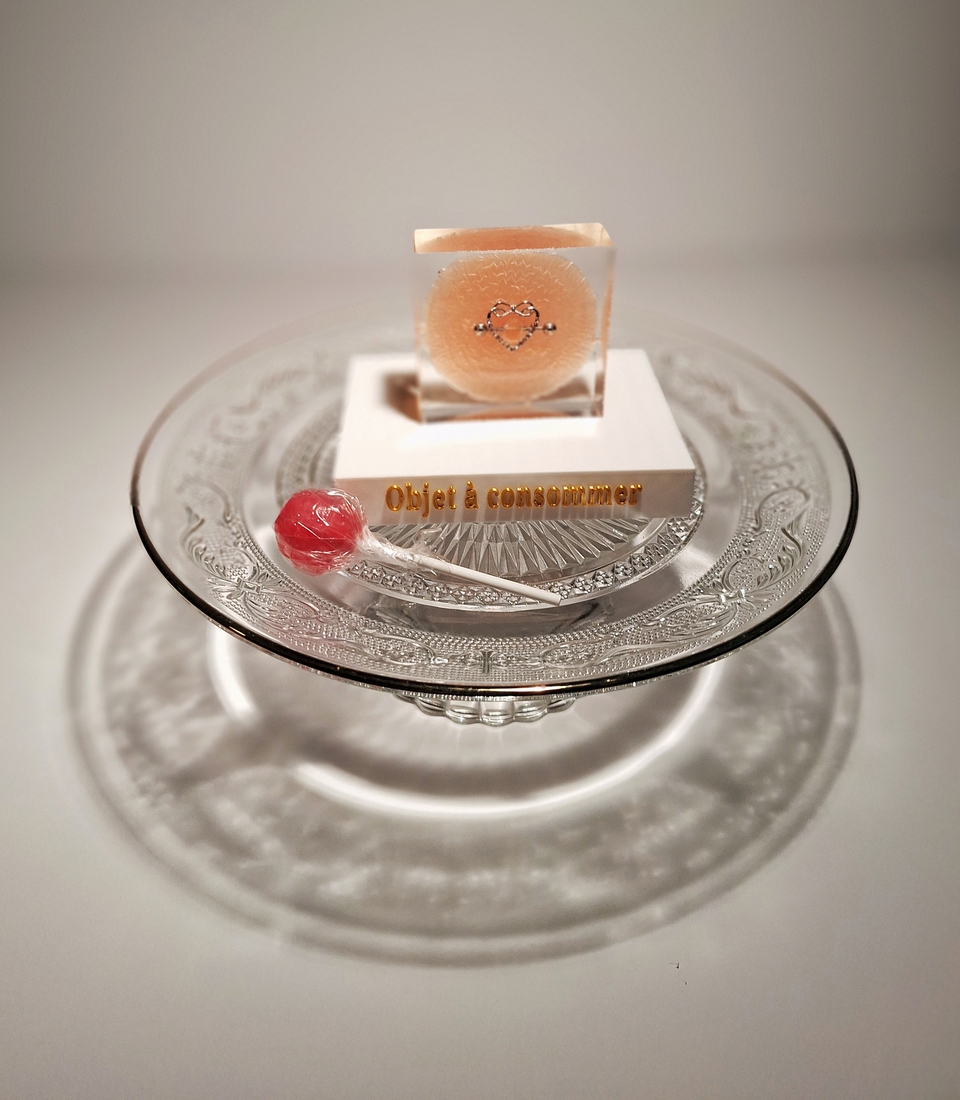Objet à consommer features a hyperrealistic nipple embedded in a clear epoxy cube, displayed on a white pedestal with gold lettering. The nipple, pierced with a heart-shaped ornament, evokes both intimacy and commodification. The title — “Object to consume” — points directly to the fetishization of the body in consumer culture.
The piece critiques how especially female-coded body parts are decontextualized and transformed into objects for visual and economic consumption. Following Jean Baudrillard’s theory of simulation, the nipple becomes a fetishized icon — a simulacrum severed from any bodily origin. It is not a reference to the body, but a substitute for it.
Foucault’s notion of biopolitics resonates here as well: bodies and desires are not only disciplined, but aestheticized and made profitable. The sterile, almost clinical presentation — polished resin, geometric framing, designer typography — echoes the language of luxury branding while amplifying the tension between flesh and form.
Feminist thinkers such as Laura Mulvey and Martha Nussbaum would read the work as a commentary on the “male gaze” and the instrumentalization of desire. By isolating the nipple and framing it as a consumable, the work reflects how affection and eroticism are increasingly commodified in the digital age.
Objet à consommer is both artifact and provocation — a relic from a world where even intimacy becomes merchandise.
